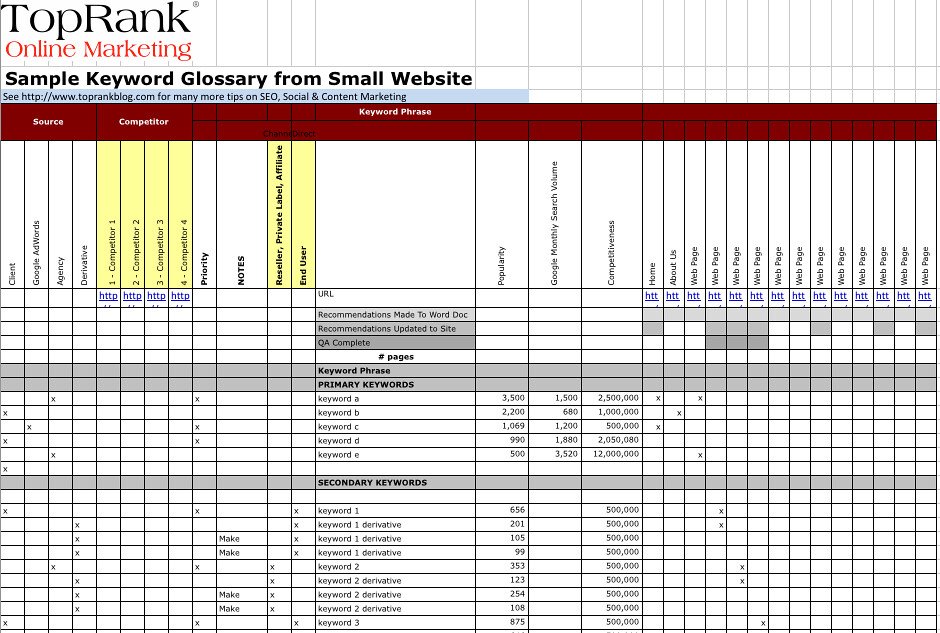Once upon a time, in the vast kingdom of the World Wide Web, websites roamed freely, valiantly seeking to conquer the digital realm. With each backlink acquired, they grew stronger, their presence soaring ever higher. But little did they know, lurking in the shadows, a sinister force was at work – toxic backlinks. Like venomous serpents coiled around their virtual existence, these treacherous links held their true potential captive, ensnaring their ranks with invisible chains. But fear not, brave digital warriors, for here we stand at the crossroads of enlightenment and liberation. In this article, we shall embark on an epic journey to detoxify your website from the clutches of toxic backlinks and set it free to reign supreme once more. Brace yourselves, for the time has come for Link Liberation!
Table of Contents
- Why Toxic Backlinks Could Be Hurting Your Website’s Performance
- Unveiling the Hidden Dangers of Toxic Backlinks and Their Impact on SEO
- Effective Strategies to Identify and Eliminate Toxic Backlinks for Improved Website Health
- Proven Methods to Safeguard Your Website by Building High-Quality Backlinks
- Q&A
- To Wrap It Up

Why Toxic Backlinks Could Be Hurting Your Website’s Performance
Toxic backlinks can be detrimental to your website’s performance, hindering its ability to rank well in search engine results. These harmful links come from websites with low domain authority, spammy content, or even those engaged in black hat SEO practices. While acquiring backlinks is important for SEO, it’s crucial to ensure that they are high-quality and relevant. Let’s take a closer look at why toxic backlinks can harm your website and how you can detoxify it from these harmful elements.
1. Google’s Algorithms Don’t Like Toxic Backlinks: Google’s primary goal is to provide users with the most relevant and valuable search results. Therefore, the search engine giant constantly updates its algorithms to identify and penalize websites with toxic backlinks. So, if your website has a significant number of toxic links, it can negatively impact your organic search rankings, resulting in lower visibility and reduced traffic.
2. Quality over Quantity: It’s important to note that not all backlinks are equal. In fact, toxic backlinks from websites with low domain authority can outweigh the positive effects of hundreds of legitimate backlinks. Instead of focusing on the quantity of backlinks, it’s crucial to prioritize quality. Aim for backlinks from reputable websites that are relevant to your niche. Remember, a single high-quality backlink can have more value than multiple toxic ones.

Unveiling the Hidden Dangers of Toxic Backlinks and Their Impact on SEO
Backlinks play a crucial role in Search Engine Optimization (SEO), elevating your website’s visibility and authority in the digital realm. However, not all backlinks are created equal. Unveiling the hidden dangers of toxic backlinks is an essential step to safeguarding your website’s reputation and optimizing its performance. So, grab your virtual magnifying glass as we embark on a journey to detoxify your website from these sneaky culprits!
1. The Poisonous Penalties: Toxic backlinks can wreak havoc on your website’s SEO efforts. Search engines like Google are quick to penalize websites with an abundance of low-quality or spammy backlinks. These penalties can result in a significant drop in organic rankings, pushing your website further down the search engine results page (SERP).
2. Quality over Quantity: When it comes to building backlinks, it’s not just about the numbers game. Quality reigns supreme. A single high-quality backlink from an authoritative website can have a more substantial impact on your SEO than a dozen toxic backlinks. Focus on earning backlinks from reputable sources in your industry to strengthen your website’s credibility and increase its chances of ranking higher in search results.
3. Cloaked in Deception: Toxic backlinks often disguise themselves among legitimate ones, making them hard to spot. Conducting regular link audits and using tools like Google Search Console can help uncover these hidden dangers and address them promptly.
4. The Relevance Factor: Backlinks from irrelevant websites can potentially harm your SEO efforts. Search engines prefer to see a strong connection between the content of the linking page and your website’s niche. Aim for backlinks from websites that share similar interests, topics, or industry relevance to ensure a higher level of trust and authority.

Effective Strategies to Identify and Eliminate Toxic Backlinks for Improved Website Health
Backlinks are an essential element in building a strong online presence. However, not all backlinks are created equal. Some can actually harm your website’s health and hinder its performance. That’s where effective strategies to identify and eliminate toxic backlinks come into play. By following these strategies, you can boost your website’s health and ensure that it thrives in the digital landscape.
One of the first steps in detoxifying your website from toxic backlinks is to conduct a thorough backlink analysis. This involves examining all the backlinks pointing to your site and identifying any that may be toxic. Look for backlinks from spammy websites, low-quality directories, or sites with a high spam score. These toxic backlinks can have a negative impact on your website’s search engine rankings and overall credibility.
- Compile a list of all the backlinks pointing to your website.
- Use online tools such as SEMrush, Ahrefs, or Moz to analyze the quality of these backlinks.
- Look for backlinks from websites with a low domain authority or sites that have been flagged as spam.
- Check for any backlinks that are unrelated to your website’s niche or industry.
- Identify any links with anchor text that appears unnatural or overly keyword-focused.
- Make note of any backlinks from websites that have been penalized by search engines.
Once you have identified the toxic backlinks, it’s time to take action and eliminate them. There are several methods you can use to do this, such as reaching out to webmasters and requesting the removal of the backlinks. Alternatively, if a webmaster is unresponsive or unwilling to remove the toxic backlinks, you can utilize the Google Disavow Tool. This tool allows you to tell Google not to consider specific backlinks when assessing your website’s rankings.
By regularly monitoring and detoxifying your website from toxic backlinks, you can improve its overall health and ensure that it stays in good standing with search engines. Remember, a healthy link profile is crucial for maintaining a strong online presence and attracting organic traffic. So, don’t underestimate the importance of identifying and eliminating toxic backlinks for the success of your website!

Proven Methods to Safeguard Your Website by Building High-Quality Backlinks
In the realm of website building, backlinks play a crucial role in determining your search engine rankings and overall online visibility. However, not all backlinks are created equal. In fact, toxic backlinks can wreak havoc on your website’s reputation and organic traffic. But fear not! We’re here to liberate your website from the clutches of these harmful links and show you how to build high-quality backlinks that will safeguard your online presence.
1. Quality over quantity: Instead of focusing on obtaining a plethora of backlinks, prioritize quality over quantity. Seek out websites that are relevant to your niche or industry, have a good domain authority, and are reputable in the eyes of search engines. These high-quality backlinks will not only improve your website’s authority but also ensure that you receive organic traffic from genuine sources.
2. Natural link building: Building a network of high-quality backlinks should be a gradual and organic process. Avoid engaging in black hat techniques such as buying links or spamming comment sections. Instead, aim for natural link building by creating exceptional content that others will naturally want to link to. By focusing on producing valuable and informative articles, blog posts, or videos, you will attract organic backlinks from authoritative websites.
3. Anchor text optimization: Anchor texts are the hyperlinked words that direct users to your website. When building backlinks, ensure that the anchor text is relevant to your content and includes your target keywords. However, be cautious not to over-optimize or use the same anchor text repeatedly, as this can be penalized by search engines.
4. Guest blogging: A powerful and effective way to secure high-quality backlinks is through guest blogging. By writing and publishing articles on reputable websites within your niche, you can not only showcase your expertise but also include backlinks to your own website. This not only drives traffic but also enhances your website’s authority and credibility.
By following these proven methods, you can liberate your website from toxic backlinks and build a strong foundation of high-quality backlinks that will safeguard your online presence and attract organic traffic. Remember, it’s not just about the number of backlinks, but the quality and relevance that truly matter.
Q&A
Q: What is the concept of “”?
A: “Link Liberation” refers to the process of liberating your website from toxic backlinks, which are harmful links pointing to your site from external sources. This process involves identifying and eliminating these toxic backlinks to improve your website’s overall health and enhance its performance in search engine rankings.
Q: How can toxic backlinks harm my website?
A: Toxic backlinks can harm your website’s reputation and visibility in search engine results. These links may come from spammy or low-quality websites, which can negatively impact your site’s credibility. Search engines may penalize your website for having links from such sources, resulting in reduced organic traffic and a diminished online presence.
Q: How do I identify toxic backlinks?
A: Identifying toxic backlinks requires a careful examination of your website’s link profile. Look for links from suspicious or unrelated websites, sites with poor content quality, and those associated with black-hat SEO tactics. Additionally, you can use various online tools and software to analyze your backlinks and identify potentially toxic ones.
Q: What are the consequences of not detoxifying toxic backlinks?
A: Failing to detoxify toxic backlinks can result in severe consequences for your website. Search engines like Google may blacklist or penalize your site, pushing it down in search rankings or even removing it from search results. This can significantly hamper your organic traffic, hinder your online visibility, and impact your business or website’s growth.
Q: How can I successfully detoxify toxic backlinks?
A: Detoxifying toxic backlinks involves a multi-step process. Start by conducting a comprehensive backlink analysis to identify potential toxic sources. Once detected, reach out to the website owners and request the removal of the harmful links. If unsuccessful, you can use the Google Disavow Tool to inform search engines about these toxic backlinks and disassociate them from your site.
Q: Is there a risk of mistakenly removing valuable backlinks while detoxifying toxic ones?
A: While it is possible to mistakenly remove valuable backlinks during the detoxification process, it is crucial to thoroughly analyze each link before disavowing it. Take a cautious approach and consider factors like domain authority, relevance, and the overall quality of the linking website. This way, you can minimize the risk of eliminating beneficial backlinks.
Q: How long does it take to see improvements after detoxifying toxic backlinks?
A: The time it takes to see improvements after detoxifying toxic backlinks can vary. Factors such as the number of toxic backlinks, search engine crawl rates, and the effectiveness of your detoxification efforts play a role. You may notice gradual improvements in search engine rankings and organic traffic over several weeks or months as search engines reevaluate your website’s credibility.
Q: Is detoxifying toxic backlinks a one-time process?
A: Detoxifying toxic backlinks is not a one-time process; it requires ongoing monitoring and analysis of your website’s link profile. Regularly check for new toxic backlinks that may appear and take immediate action to neutralize their impact. Maintaining a healthy backlink profile is an ongoing effort to ensure long-term success for your website.
Q: Are there any preventive measures to avoid toxic backlinks in the future?
A: Yes, several preventive measures can help you avoid toxic backlinks in the future. Focus on building high-quality, organic backlinks from reputable and relevant websites. Regularly monitor your website’s link profile, and promptly disavow any newly discovered toxic backlinks. Additionally, staying up-to-date on SEO best practices and avoiding dubious link-building strategies can contribute to a clean and toxic-free backlink profile.
To Wrap It Up
As we conclude our journey into the realm of link liberation, it is worth celebrating the triumphs that await at the end of this arduous path. Detoxifying your website from toxic backlinks is no small feat, but the rewards that follow are immeasurable.
Like a skilled alchemist transforming base metals into gold, you have unlocked the secret to reclaiming your website’s true potential. By purging toxic backlinks, you have lifted the heavy burdens that once hindered your online presence, setting your website free to thrive and soar to new heights.
Picture your website as a vibrant garden, blooming with organic, healthy links. As the harmful weeds of toxic backlinks are removed, the nourishing sunlight of genuine connections can now reach every corner of your digital landscape. Your URLs will shine brightly, attracting the attention of search engines and enticing visitors with relevant content. With each passing day, your website will grow stronger, paving the way for long-term success and sustainable growth.
But let us not forget the lessons learned from this liberation. We have discovered the importance of a well-rounded link profile, built on trust, relevance, and authenticity. It is a reminder that shortcuts and black hat techniques may offer fleeting gains, but ultimately lead to the downfall of a website’s reputation.
As you emerge from this chapter of your website’s story, remember to nurture and tend to your link profile. Regular checks, maintenance, and optimization will safeguard your hard-earned progress, ensuring that your website remains a beacon of quality and authority in the vast digital realm.
It is now time to bid adieu, armed with the knowledge and tools to detoxify your website from toxic backlinks. Embrace the freedom that comes with a clean slate, and approach the future with a renewed sense of optimism and purpose. May your links be strong, your content be exceptional, and your online presence be nothing short of remarkable.
Farewell on this liberating journey, and may your website find eternal freedom from the chains of toxicity. Happy link building!

